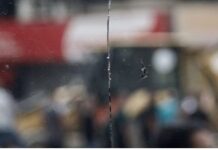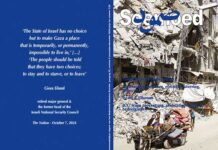Adnan Abu Amer
Middle East Monitor / April 7, 2021
The Central Elections Commission has completed the first phase of preparations for holding the legislative elections, by formally registering the 36 competing electoral lists that will compete for the 132 seats in the Palestinian Legislative Council (PLC).
The last few days have been loaded with surprises, as the competing electoral lists came as the following: Eight lists affiliated with the Palestinian factions, including three Fatah lists (the movement’s central list, the freedom list belonging to Nasser al-Qudwa and Marwan Barghouti alliance, and the Future list led by Mohammed Dahlan’s movement), a unified Hamas list called Al-Quds Maw’edouna (in Jerusalem we meet), and four other lists affiliated with the left, in addition to 28 lists belonging to independents, youth movements and trade unions.
According to initial estimations deduced from the map of competition between political forces in the scene, there is a narrow margin of victory for independent forces, as opposed to higher (but average in general) winning chances for faction-oriented lists, because the Palestinian voter will be essentially polarised by two major forces, which are Hamas and Fatah.
Hamas will enter the elections with a unified list, and it will benefit from the dispersion of votes for Fatah, which this time is participating in the elections with three electoral lists. That is to say that the Fatah voting bloc will be divided into three separate directions, which means that we would possibly witness a similar experience to what happened in 2006 when Hamas won the first place, but without forgetting the difference in victory rates, due to the fact that the proportional representation system prevents any list from obtaining voting percentages above 50 per cent.
While 11 lists competed in the 2006 legislative election, only seven succeeded to enter the PLC. Thus, 1.3 million Palestinians were eligible to vote at the time. In the 2021 elections, the situation was significantly different, as the number of participating electoral lists tripled (from 11 to 36 lists), and the number of eligible voters reached 2.5 million.
According to the electoral law that set the threshold at 1.5 per cent, every list needs 37,000 votes to win a seat in the PLC.
The large number of registered electoral lists indicates that the Palestinian situation has become completely paralysed due to years of political division. On the other hand, there has been a considerable amount of criticism directed by the Palestinians against the two poles dominating the Palestinian political scene in the West Bank and Gaza Strip (Hamas and Fatah), which explains the broad Palestinian desire for change, because a generation of young people, accounting for 40 per cent of the electoral base, grew up during an era of sharp political rifts.
Today’s competition between independent and leftist forces is not conducive to this trend of change. Hence the left, which claims to be an incubator for young people and the independents, is entering elections with extremely small chances to win, as only seven to nine lists with leftist affiliations are expected to reach decisive or victory ratios.
This competitive atmosphere and the dispersal of leftist votes will be very beneficial to Hamas and Fatah, although the chances of establishing an alliance between the Fatah forces are more realistic, due to similarities at the level of political identities, and their shared consensus not to allow Hamas to rule the political arena alone.
The split within Fatah has become a central feature of the upcoming elections. In fact, the recent events witnessed by the movement have reshaped the map of electoral alliances and opened the door to scenarios that were not anticipated previously. Hence, after the nominations of former members of the movement’s central committee, Mohammed Dahlan and Nasser al-Qudwa, Marwan Barghouti decided to join an alliance with Al-Qudwa hours before the end of the candidacy deadline.
Despite the number of electoral lists expected to participate in the elections, the competition is confined to two main programmes. The first demarche believes in resistance and striving against the occupation as the main option to achieve a breakthrough in the status quo, and it is led by Hamas, the Popular Front for the Liberation of Palestine (PFLP) and some independents. Whereas the second, represented by the Fatah movement with its three components and the youth movements, believes that the current stage requires the continuation of negotiations to obtain economic concessions at the expense of the Palestinian national cause.
Fatah is trying to justify the state of fragmentation it suffers by claiming that the movement’s presentation in this election is an expression and a reflection of a normal situation that all the factions and political forces are going through, as the period of division that lasted 15 years caused a rift between the factions at the level of popular bases and the leadership, and the Fatah movement is part of that scene. But in reality, the situation seems different for the movement given its popular presence and political weight in the presidency and parliament, not to mention the Palestine Liberation Organisation (PLO).
The leadership circles in Fatah claim that the past experiences underwent by the movement gave it the ability to overcome these stages of the internal dispute, in a way that serves the interest of the movement and the Palestinian situation in general and contributes to saving Palestine from the current predicament.
The Al-Qudwa-Barghouti alliance came as a shock to Fatah and its president, Mahmoud Abbas. Barghouti, who announced earlier through his close associates that he did not intend to break the movement’s consensus in the upcoming legislative elections, has reshaped a new political map that will affect the chances of Fatah winning the election by allying with Al-Qudwa.
Those who observe the parties competing in the Palestinian legislative elections will find great similarities that may reach the point of conformity between the proposed political programmes, including the one presented by Hamas, Fatah’s three lists, and the left and independent forces. However, the major difference occurs in the economic visions and programmes of each list, which will be the main pillar of the upcoming election campaigns.
On the other hand, the Palestinian voter has four determinants to accept the list and vote for it: the first of which is improving the economic conditions and the extent of the list’s ability to provide solutions to end the financial crises that he/she is suffering, the second is combating rampant corruption in the Palestinian Authority’s institutions, the third is ending the blockade imposed on the Gaza Strip, and the fourth is ending the occupation or curtailing the ongoing policies of plundering the Palestinian lands and expelling their inhabitants.
The Palestinian legislative elections constitutes a source of disturbance for Israel, as senior Israeli officers threatened earlier that Israel will not accept the results of the elections if Hamas wins, and will sever its ties with the Palestinian Authority like it did following the 2006 elections; without excluding the fact that Israel can disrupt the elections by banning movement between the Palestinian territories, refusing to allow foreign observers’ entry to the county, and perhaps using the carrot and stick method by politically honouring Abu Mazen in exchange for suspending the elections.
However, if Abbas insists on going ahead with the elections, and Hamas wins, then probably Israel will need to prepare for the scenario of destabilising security in the West Bank, given that the Palestinians have a well-known rule, which says if tensions arise internally, then anger must be directed towards Israel.
Adnan Abu Amer is the head of the Political Science Department at the University of the Ummah in Gaza












